After a quick look yesterday at the new range from Coin Invest Trust released for the ANA show in Anaheim, it’s time to pick out some highlights in more detail. First up is the second coin in the Evolution of Life series, which debuted at last years ANA show with the quite superb Ammonite coin. A big hit, widely admired, there’s been much anticipation since we revealed a few weeks ago that the second coin would feature a trilobite.
The beauty of the trilobite as an inspiration lies in several things. Firstly, there are a wide range of species that are very well represented in the fossil record, many in an astounding state of preservation. In addition, despite all the spines and weird appendages the type is famous for, they’re recognisable, looking like a woodlouse, so eminently relatable. CIT have chosen well for their subject matter, a species of trilobite that is spectacular enough to be struck into a coin without too many compromises, even for smartminting. Based on a real fossil of a 470-million-year-old Cheirurus ingricus found near the Wolchow River, St. Petersburg, Russia, it’s clear they chose wisely.
Like the ammonite coin, this one is struck in an ounce of fine silver, antique-finished, and with the fossil itself picked out with rose gold gilding. It worked brilliantly last year and looks equally effective on this years coin. Issued for Mongolia and carrying the standard obverse design from that country, Evolution of Life stands alongside the equally impressive Wildlife Protection series as being amongst the finest coin designs out there.
Packaging is decent, the wooden box with customised top artwork used for virtually all of Coin Invest Trust’s higher end ranges is in use here. It holds a Certificate of Authenticity. The coin should be available in the next 4-8 weeks if prior experience is an indicator. The first coin has appreciated quite nicely and this could well follow in its footsteps, especially with mintage at just 999 pieces. A great release.
Also issued alongside it is the ubiquitous minigold that CIT have long been proponents of. A cool little coin with a huge amount of detail for an 11mm diameter round of gold, these have a collectors market all of their own. Personally, I’d like to see these in rose gold to match the gilding on the silver coin. Even if they weren’t 0.9999 gold, would that be cool?
COIN IMAGES
TRILOBITES
MINTS DESCRIPTION
The hugely popular first issue of the new Evolution of Life series ‘Ammonite’ raised high expectations and anticipation for first successor. The 2016 coin now presents the Ordovician period with a stunning, partially excavated trilobite, which is based on a real, 470-million-year-old fossil found near St. Petersburg, Russia.
The original measures nearly 8 centimetres and belongs to the species Cheirurus ingricus. As expected of the series, the trilobite is minted in impressive relief with a brilliant red-gold finish. The half gram gold spin-off series ‘Evolution’ features the same fossil design in minute detail.
Trilobites, meaning “three lobes”, are a fossil group of extinct marine arthropods that form the class Trilobita. Trilobites form one of the earliest known groups of arthropods. The first appearance of trilobites in the fossil record defines the base of the Atdabanian stage of the Early Cambrian period (521 million years ago), and they flourished throughout the lower Paleozoic era before beginning a drawn-out decline to extinction when, during the Devonian, all trilobite orders except the Proetids died out. Trilobites finally disappeared in the mass extinction at the end of the Permian about 250 million years ago. The trilobites were among the most successful of all early animals, roaming the oceans for over 270 million years.
By the time trilobites first appeared in the fossil record, they were already highly diversified and geographically dispersed. Because trilobites had wide diversity and an easily fossilized exoskeleton, an extensive fossil record was left behind, with some 17,000 known species spanning Paleozoic time. The study of these fossils has facilitated important contributions to biostratigraphy, paleontology, evolutionary biology, and plate tectonics.
Trilobites had many lifestyles; some moved over the sea bed as predators, scavengers, or filter feeders, and some swam, feeding on plankton. Most lifestyles expected of modern marine arthropods are seen in trilobites, with the possible exception of parasitism. All trilobites are thought to have originated in present-day Siberia, with subsequent distribution and radiation from this location.
CHEIRURUS INGRICUS
Trilobites appear to have been exclusively marine organisms, since the fossilized remains of trilobites are always found in rocks containing fossils of other salt-water animals such as brachiopods, crinoids, and corals. Within the marine paleoenvironment, trilobites were found in a broad range from extremely shallow water to very deep water. Trilobites, like brachiopods, crinoids, and corals, are found on all modern continents, and occupied every ancient ocean from which Paleozoic fossils have been collected. The remnants of trilobites can range from the preserved body to pieces of the exoskeleton, which it sheds in the process known as ecdysis. In addition, the tracks left behind by trilobites living on the sea floor are often preserved as trace fossils.
Trilobite fossils are found worldwide, with many thousands of known species. Because they appeared quickly in geological time, and moulted like other arthropods, trilobites serve as excellent index fossils, enabling geologists to date the age of the rocks in which they are found. They were among the first fossils to attract widespread attention, and new species are being discovered every year.
When trilobites are found, only the exoskeleton is preserved in all but a handful of locations. A few locations preserve identifiable soft body parts (legs, gills, musculature & digestive tract) and enigmatic traces of other structures (e.g. fine details of eye structure) as well as the exoskeleton.
Trilobites range in length from minute (less than 3 millimetres (0.12 in)) to very large (over 30 centimetres (12 in)), with an average size range of 3–10 cm (1.2–3.9 in). Supposedly the smallest species is Acanthopleurella stipulae with a maximum of 1.5 millimetres (0.059 in). The world’s largest known trilobite specimen, assigned to Isotelus rex of 72 cm, was found in 1998 by Canadian scientists in Ordovician rocks on the shores of Hudson Bay. (Source: Wikipedia)
MINIGOLD
SPECIFICATION
| DENOMINATION | COMPOSITION | WEIGHT | DIAMETER | FINISH | MINTAGE | BOX / COA |
|---|---|---|---|---|---|---|
| 500 TOGROG | 0.999 SILVER | 31.1 g | 38.61 mm | ANTIQUE | 999 | YES / YES |
| 1000 TOGROG | 0.9999 GOLD | 0.5 g | 11.0 mm | PROOF | 15,000 | OPT / YES |


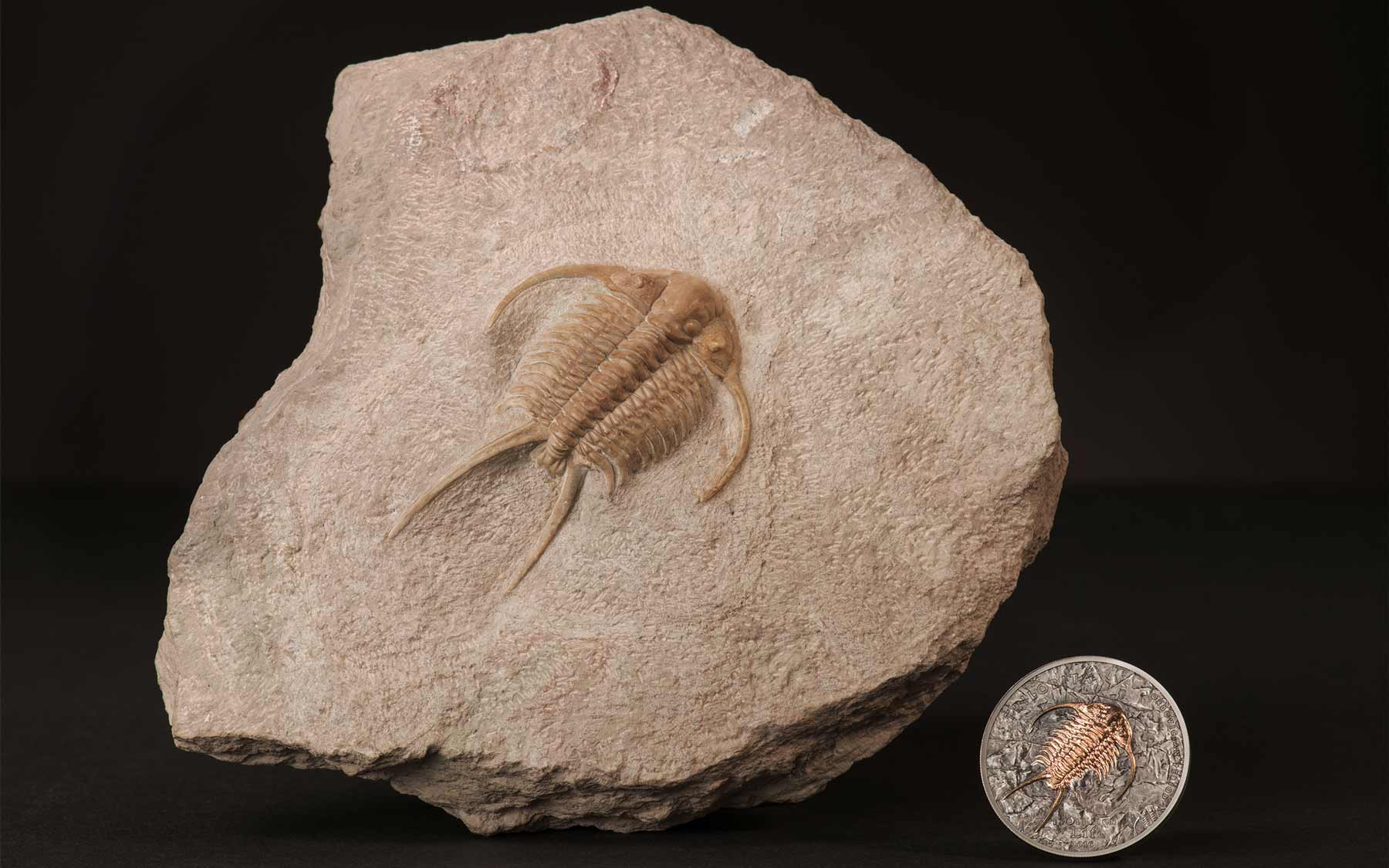
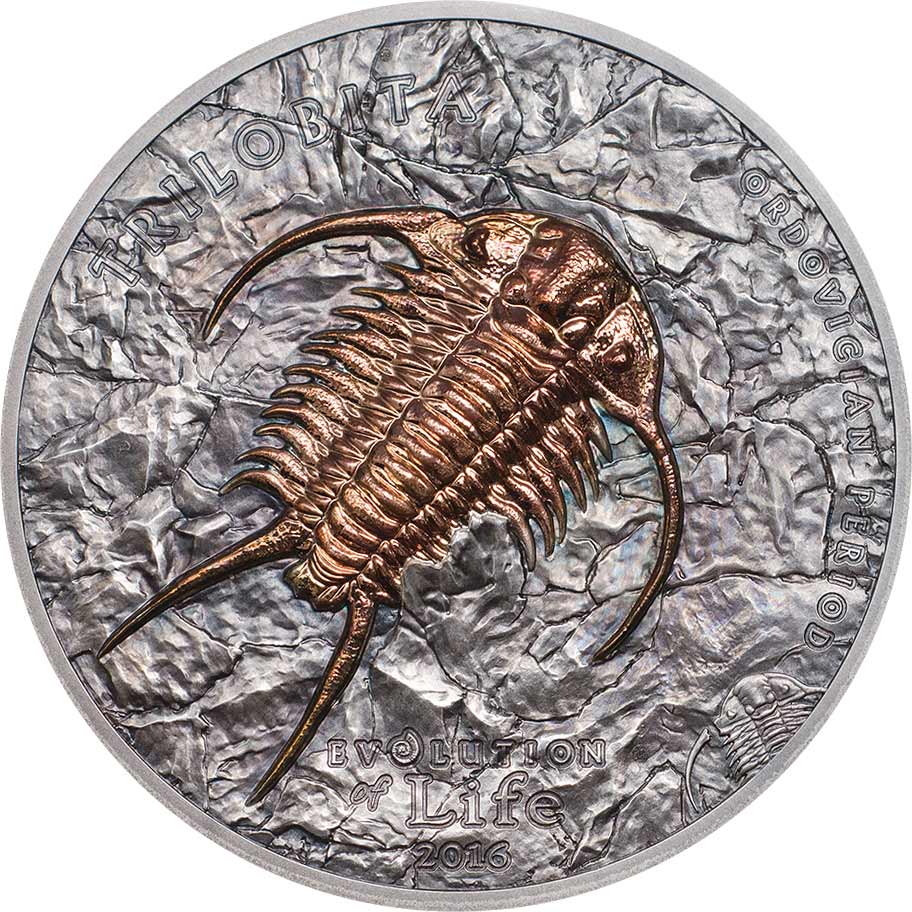
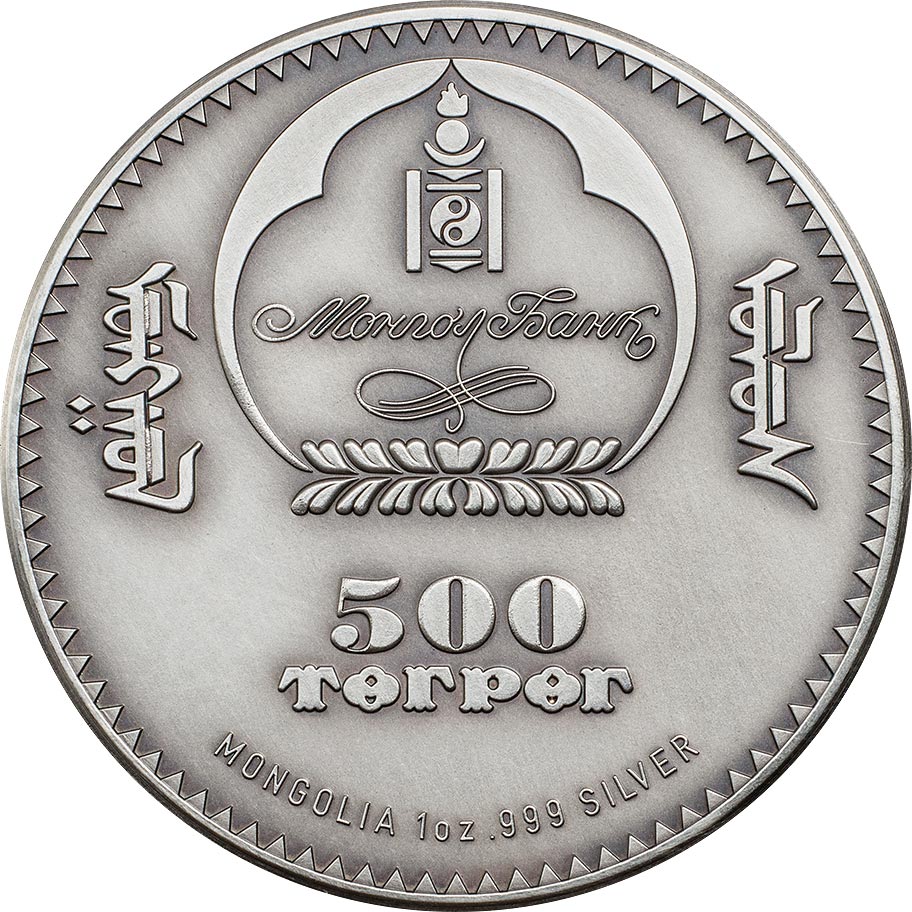
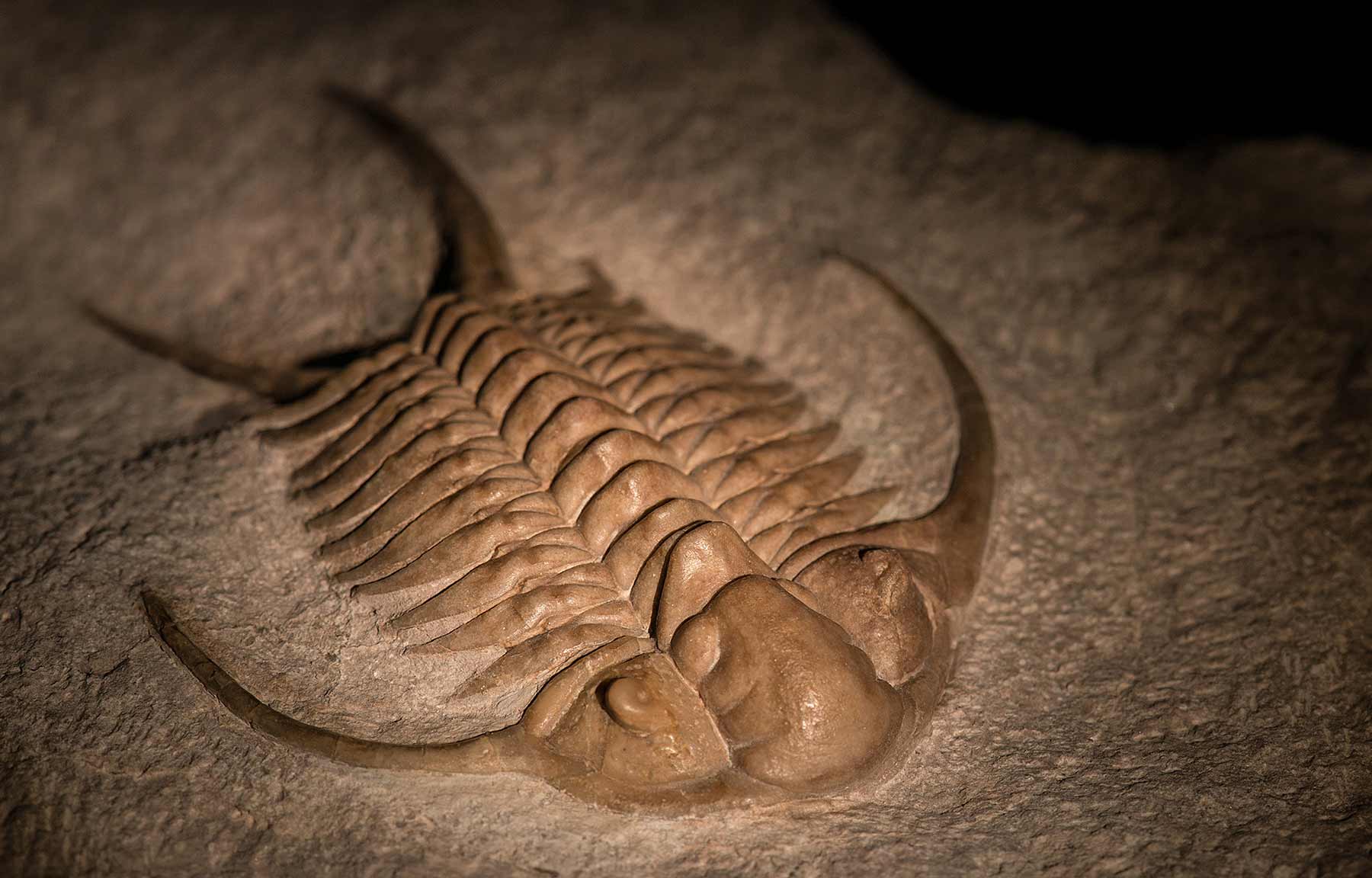
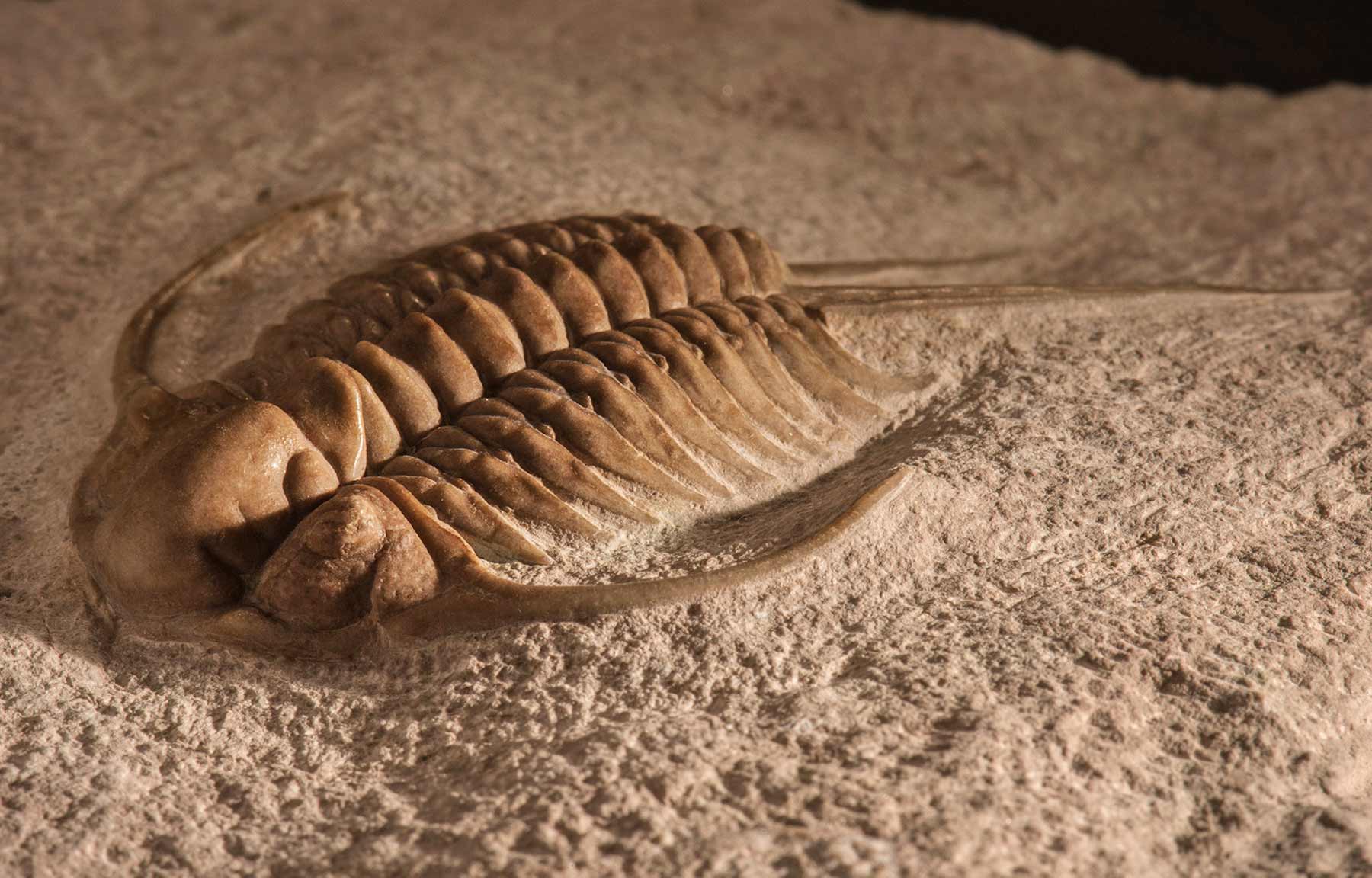





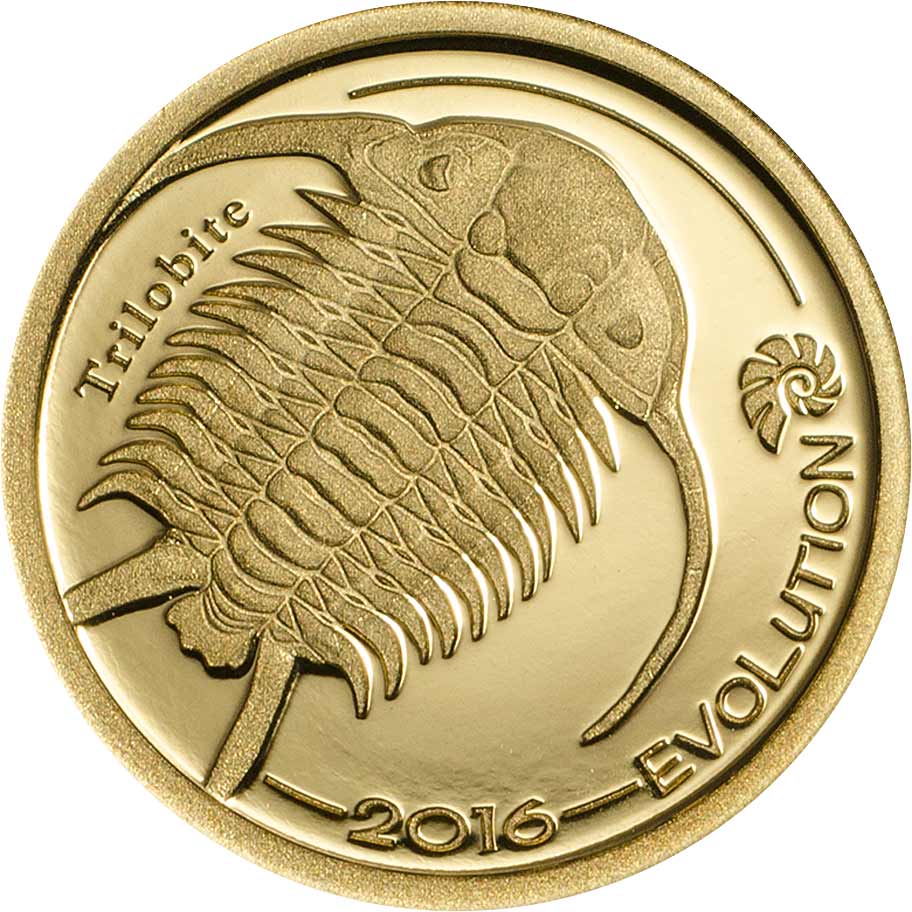


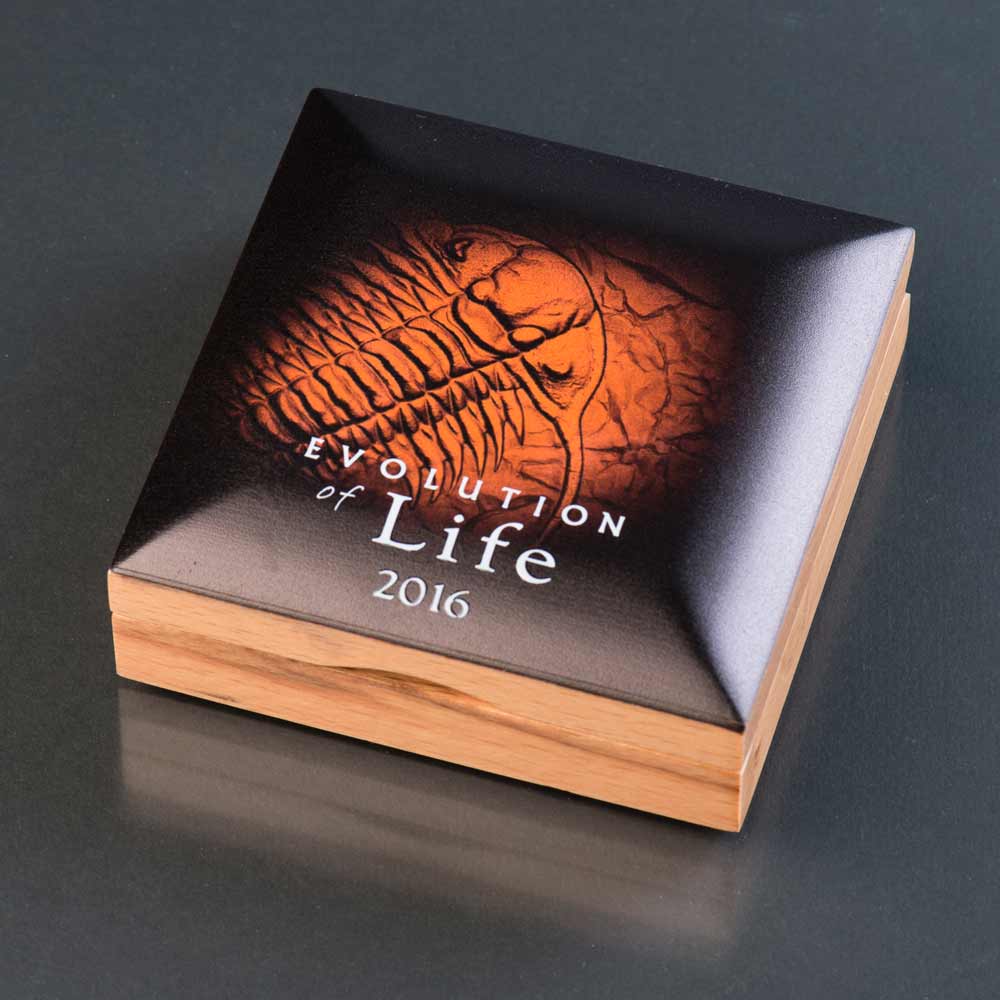
Leave A Comment